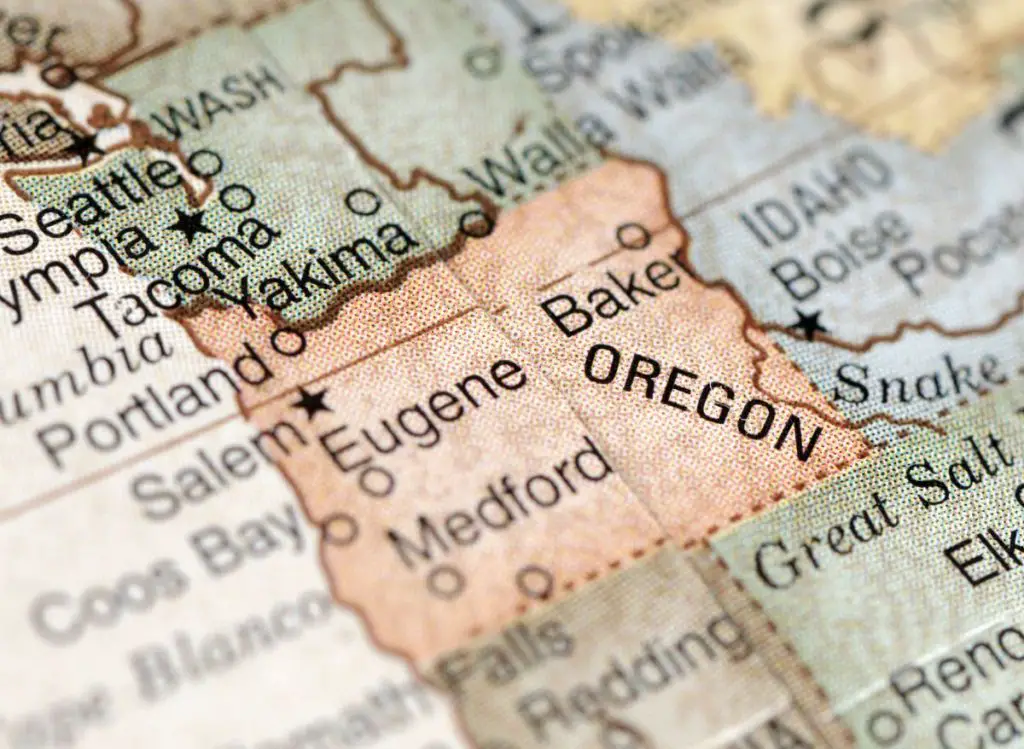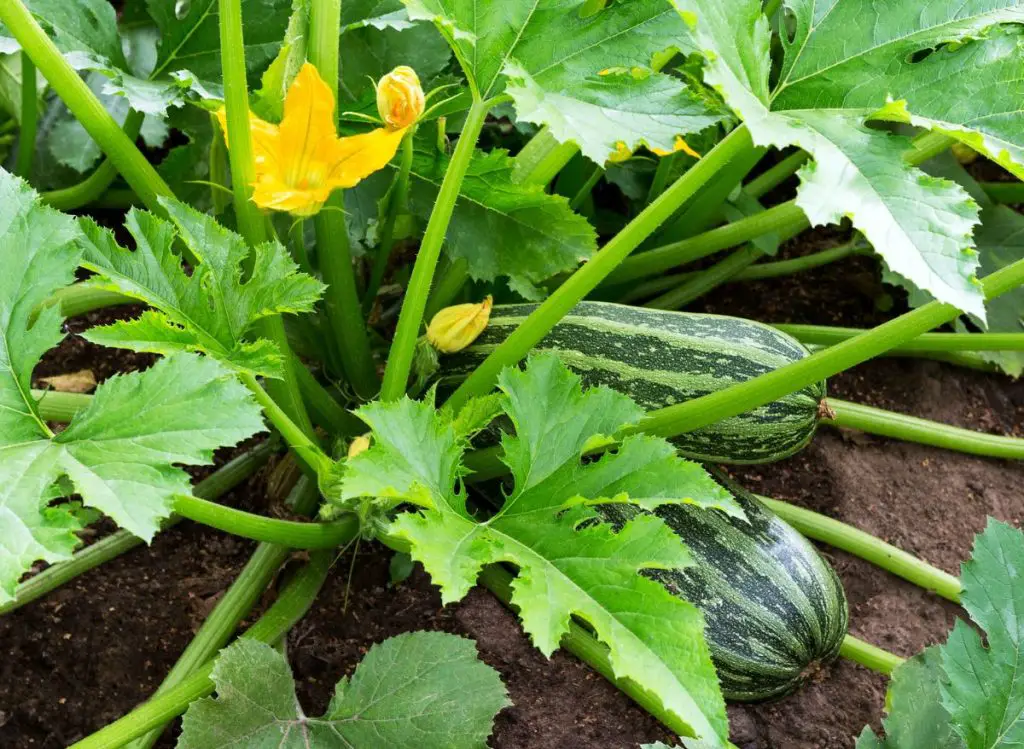
Zucchini is easy to plant to grow in your home garden, plus it’s packed with nutrition and versatile in the kitchen. No matter which town or climate you live in, zucchini is one vegetable that you can grow.
It’s an ideal vegetable to grow in Oregon; you just have to be mindful of the growing zone and climate that you live in.
Zucchini is a cool-season crop with a short growing season, needing only 45-55 days from seed time until harvest time. It can be grown in containers, in-ground gardens, raised beds, and indoors.
The exact USDA growing zone and micro-climate in your landscape will determine when to plant zucchini. Oregon ranges from growing zone 4b to 9b. That is a big temperature and climate difference.
Do your research to discover your growing zone and follow these tips for when to plant zucchini in Oregon so you can have at least one bumper crop, maybe even two, each year.
If you enjoy growing Zucchini, I encourage you to read this article: 13 Effective Zucchini Companion Plants To Try Now!
Oregon Growing Zones
Oregon is a wide and long state, almost square, and covers 400 miles in width and about 360 miles in length. The growing zones are from 4b at the coast and rise to 9b on the mountains in the north portion of the state.
- Growing zone 4b will have an average winter temperature of -30 to -20 degrees Fahrenheit.
- Growing zone 9b will have an average winter temperature of 25 to 30 degrees Fahrenheit.
This is a huge temperature difference within the state, and it will determine how long the growing season is in each area and when you should plant zucchini.
The elevation of the state varies greatly and must be factored in when planning your garden. The elevation creates micro-climates and environmental pockets that can be warmer or colder than the surrounding landscape.
A typical backyard in Oregon can have several different micro-climates. These are not bad things, just things that you should be aware of when selecting the planting location for zucchini and other garden vegetables.
Oregon goes from 3,000 feet at the coast to 11,000 feet on top of Mount Hood. The landscape is also varied and includes beach environments with sandy soil and mount environments with rocky soil. So plants that grow well in southern Oregon may not grow at all in northern Oregon and vise-versa.
You might also enjoy reading: 19 Fall Vegetables To Grow In Pots (And Helpful tips on caring for each!)
Best Tips For Growing Zucchini In Oregon
- Zucchini thrives in rich, fertile, well-drained soil with a pH between 6.0 to 8.0.
- The minimum soil temperature needed for germination of zucchini is about 60 F, and the optimum temperature for germination of zucchini is between 70 and 95 F.
- Use 36 to 40 inches ( 91.44 to 101.6 cm) spacing between rows with plants 18 to 36 inches (45.72 to 91.44 cm) apart.
- Fertilizer Requirements For Western Oregon: At the time of seeding, round 2 inches (5.08 cm) to the seed’s side and 3 inches (7.62 cm) deep the following:
- Nitrogen: 50-70 (N) lb/acre.
- Potash: 50-100 lb K2O/acre
- Phosphate: 115-125 (P2O5) lb/acre.
- Fertilizer Requirements For Eastern Oregon: During seeding, combine the following:
- Nitrogen: 40-60 (N) lb/acre
- Potash: 50-100 lb K2O/acre
- Phosphate: 115-125 (P2O5) lb/acre
See also: 15 Companion Plants For Swiss Chard (And which plants to avoid!)
Oregon Planting Calendar
Most of Oregon experiences four seasons each year, albeit some locations have shorter summer growing seasons than others.
The southernmost towns have long summers and mild winter weather, the northern towns have plenty of below freezing temps during the 3 to 4 months of winter, and the western portion of the state has plenty of wet, cold weather during the long winter.
January is the coldest month across the entire state, but there is still plenty of time each year to grow food. Knowing what and when to plant will help you be a successful Oregon gardener.
The planting calendar and growing zones will help you determine what will grow best in your climate and when to plant the seeds or seedlings.
Check the planting calendar to discover your area’s last predicted frost date. Remember, this is a predicted date; a surprise frost could occur after that date, so be prepared to cover up tender garden plants in the spring just in case of a late frost.
Don’t plant seeds in the ground or outdoor containers until after the last predicted frost date. The soil is too cold to germinate the seeds until after all danger of frost has passed.
If the seeds have already germinated or if you started your garden with seedlings, a late frost falling on the seedlings will kill them.
Although it’s tempting, don’t rush your spring growing season. If you’re anxious to get plants growing or if you have a short summer growing season, start garden seeds indoors. This will give you a jump start on the garden season, and you will have plenty of healthy seedlings to plant in the outdoor garden as soon as the weather permits.
See also: Is Your Zucchini Turning Yellow and Rotting? (Here’s why!)

Start Zucchini Seeds Indoors
Zucchini seeds are easy to start indoors. The plant can live its entire life indoors and be very productive if you have a warm, sunny location for it to grow in. A grow light can be used to provide the needed light for a zucchini plant to be productive.
When to plant zucchini in Oregon will be determined by where you want to plant it.
- For spring planting outdoors: Wait until all danger of frost has passed.
- For indoor seed starting: Start seeds in trays or cubes of potting soil 6 weeks before the last predicted spring frost date.
- For growing zucchini indoors: Plant the seeds anytime.
- For a fall crop grown outdoors: Plant the seeds 2 months before the first predicted frost date of fall. Since zucchini takes 45-55 days from seed planting until harvest time, 2 months (60 days) will give you a few extra days just in case of an early fall frost.
Are unwanted visitors eating your zucchini? I encourage you to check out this article: List Of 11 Animals That Eat Zucchini (And helpful tips to keep them away!)
Best Vegetables To Grow in Oregon In Fall
Zucchini is a cool-season vegetable which means it grows best when the weather is cool, like in the spring and fall. Several cool-season vegetables are ideal for growing in Oregon in the fall, no matter which growing zone you live in.
Artichokes, asparagus, cauliflower, peas, potatoes, and squash are native to Oregon. They have adapted well to the climate and environment and will make ideal garden choices for spring, summer, and fall gardens.
- Artichokes are planted in the fall, live through the winter, and are harvested in late spring.
- Asparagus is planted in the fall, but it will take a few years for the stalks to reach maturity and be productive. Asparagus is a perennial garden vegetable and will produce for up to 15 years.
- Cauliflower is a cool-season vegetable that can be grown in spring and fall. It will need about 80 days from the time the seed is planted until the head is ready to harvest. Start the seeds indoors in mid-summer for a fall crop of cauliflower.
- Peas can be planted 6-8 weeks before the first predicted frost date of fall. Select a sunny location and plant some sweet peas, snow peas, or snap peas in early spring and again in late summer.
- If you live in a mild Oregon climate, you can plant potatoes in late summer and harvest them in the winter. They will need about 4 months to reach maturity.
If you live in an Oregon area with long, cold winters, plant potatoes in the fall for a spring harvest. Plant the seed potatoes in the ground and apply a 6-inch layer of straw, and they will lay dormant throughout the winter until the soil warms in spring.
- Zucchini thrives during the fall because all the summer squash bugs are gone, and there are no predators to destroy the plants. Plant zucchini seeds directly into prepared soil in late summer. Use seedlings if your climate will have less than 60 days from late summer until the first fall frost.
- Other cool-season plants that can be grown in Oregon in the fall are arugula, kale, turnips, broccoli, mustard greens, collards, radishes, carrots, green onions, and lettuce.
- When planting a fall garden crop in the same location as the spring/summer vegetables were grown, always amend the soil with organic material first. This will improve the soil structure and make it fertile so it can support plant life.
First Frost Date And Last Frost Date In Major Cities In Oregon
The rule of thumb is that whenever you notice two weeks without frost, it is safe to plant your zucchini outside in Oregon.
You can plant Zucchini direct seed, mainly when all danger of frost has passed. Generally, in western Oregon, planting starts in early May to mid-July.
The table below shows average frost dates for most major cities in Oregon. Check here if your city is not included in the table.
| Major City In Oregon | First Frost Date | Last Frost Date |
| Eugene | October 14th | April 29th |
| Hillsboro | November 5th | March 25th |
| Gresham | November 9th | March 30th |
| Portland | November 22th | March 11th |
| Salem | October 19th | April 28th |
Wrapping Up
This is everything you need to know about when to plant zucchini in Oregon. There are several varieties of zucchini to plant; pick the type that suits your area best.
Planting zucchini is a gratifying task and will reward you with delicious crops.

